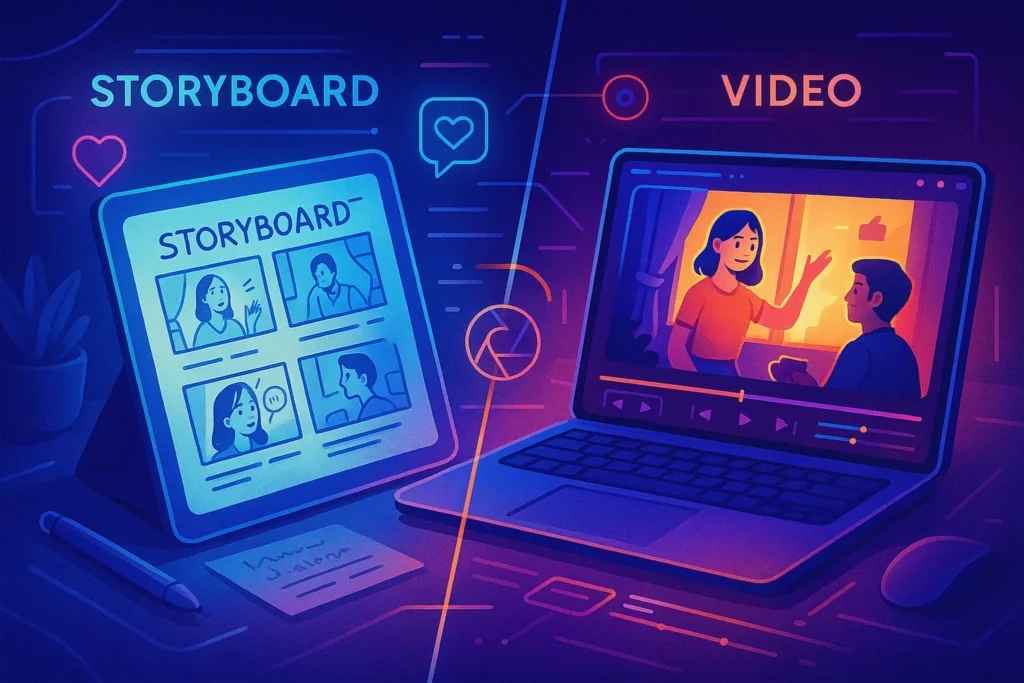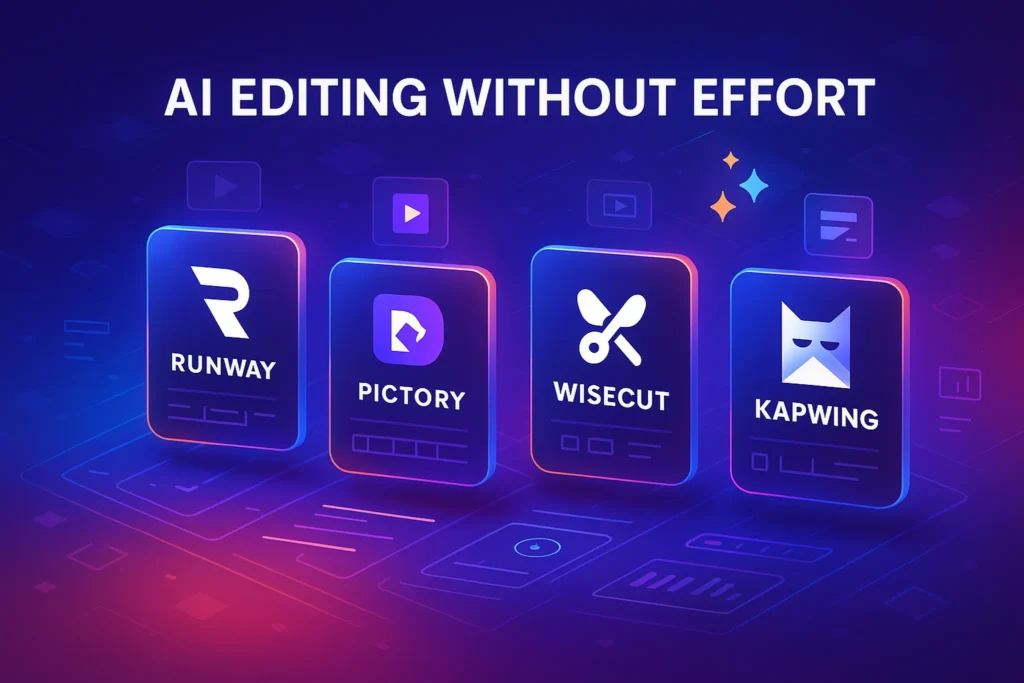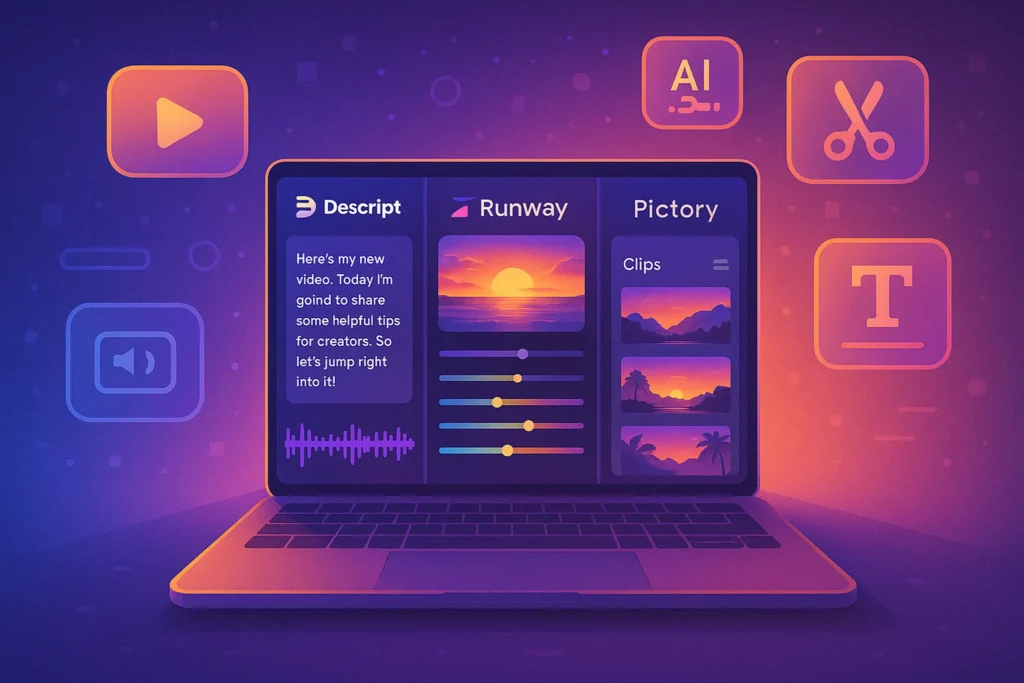🧠 Why Storytelling Is the Heart of Great Video
Information alone rarely sticks. Stories do. A well-told story can make viewers remember your brand, relate to your message, and take action long after the video ends. This is because storytelling activates both the rational and emotional parts of the brain, making the experience richer and more memorable.
Storytelling in video builds an emotional bridge between you and your audience. It’s the difference between saying “Our product is great” and showing a relatable character overcoming a challenge thanks to your product. This emotional context helps viewers internalize your message in a way a list of features never could.
Research consistently shows that story-driven content leads to higher engagement and conversion rates. As discussed in Storytelling in Content Marketing: Tips to Create Engaging Narratives, a compelling narrative is the strategic layer that turns attention into connection, and connection into loyalty. The same applies across video formats — whether it’s a 15-second TikTok or a 15-minute YouTube deep dive.
💡 Nerd Tip: If you had just 30 seconds to tell your brand’s story, what would your opening line be?
✅ The Narrative Arc: From Hook to Resolution
At the core of every effective video story is a narrative arc — a structure that guides the viewer from curiosity to satisfaction. The classic three-part arc works even in ultra-short formats:
Setup: Introduce the context and characters. This is where you hook your audience. In the first 3–5 seconds, the viewer should know why they should keep watching.
Conflict: Present the problem, challenge, or tension. This drives engagement because humans are wired to seek resolution to unanswered questions.
Resolution: Deliver the payoff. Show the transformation, the solution, or the “aha” moment that brings emotional closure.
Even brands are mastering this in 30-second ads. For example, a fitness brand might show someone struggling with at-home workouts (setup), introduce a unique piece of equipment (conflict/solution reveal), and end with them completing their first perfect push-up (resolution).
If you want to see how this approach drives clicks and shares, our How to Create Viral Video Content breakdown covers how hooks and resolutions interplay in videos that dominate TikTok, Reels, and Shorts.
💬 Relatable Characters & Authenticity
Relatability is one of the most potent forces in storytelling. Viewers connect faster when they see themselves — or someone they aspire to be — in your characters. That’s why influencer-led campaigns often outperform high-budget commercials: authenticity trumps polish when building trust.
Your characters don’t have to be actors. They can be your customers, employees, or even yourself. For example, showing your actual design team troubleshooting a challenge brings a behind-the-scenes authenticity that resonates with audiences tired of staged perfection.
Authenticity also comes from consistency. If you showcase diversity in one campaign, it should be reflected in your brand beyond the video. Otherwise, audiences sense the disconnect. This is one reason platforms like YouTube reward creators who maintain a consistent tone and persona across uploads — a topic we also touched on in Video Marketing Trends.
💡 Eliciting Emotion: The Engagement Multiplier
Emotion is the fuel that propels your video beyond the watch into the share. The type of emotion depends on your brand and audience:
-
Humor can break down resistance and make your content more shareable.
-
Inspiration motivates viewers to take action.
-
Empathy fosters deep connection, especially when telling customer success stories.
A well-placed emotional beat — a laugh, a gasp, a tear — becomes a mental anchor. Viewers may forget exact wording but remember how your video made them feel. This is especially crucial when aiming for organic reach. Viral hits like Dove’s “Real Beauty” campaigns relied on emotional resonance more than product shots.
For practical techniques on integrating emotional beats without feeling manipulative, see our How to Boost Your Video Campaigns guide.
🖥 Storytelling Across Different Formats
Short-form videos (TikTok, Instagram Reels, YouTube Shorts) demand hyper-condensed arcs. The hook has to land in the first 1–2 seconds, and the resolution should be almost immediate. Here, conflict can be implied — a surprising visual, a question on-screen, or a quick before/after reveal.
Long-form videos (YouTube explainers, webinars, documentaries) give you room to develop complex narratives, subplots, and deeper character arcs. You can build tension more gradually, include richer context, and use pacing to enhance suspense.
Your storytelling style should adapt to the format’s consumption behavior. Short-form rewards curiosity spikes and quick payoffs; long-form rewards immersion and layered reveals. Both can benefit from strong narrative scaffolding, as explained in How to Script Your Videos for Maximum Engagement.
🛠 Tools & Techniques to Elevate Your Story
Storyboarding helps visualize your narrative before filming, ensuring each shot serves the arc. Even a simple hand-drawn storyboard can clarify pacing and transitions.
AI Script Assistants like Jasper or ChatGPT can help brainstorm hook ideas, dialogue variations, or alternate endings. They won’t replace your creativity but can accelerate ideation.
Editing software with cinematic timing features (e.g., Adobe Premiere Pro, Final Cut Pro) lets you control pacing through cuts, sound design, and transitions, turning raw footage into a coherent story.
These tools aren’t magic bullets, but they amplify the techniques you bring to the table. Just as in our How to Boost Your Video Campaigns article, the right tools help you execute your vision faster and at higher quality.
📊 Real-World Example: Storytelling Done Right
Consider the “Share a Coke” campaign by Coca-Cola. While famous for its print and packaging impact, its video component was a masterclass in micro-storytelling. In 15 seconds, they showed people finding bottles with their names, sparking smiles, reunions, and even spontaneous gifting. No narration needed — the arc was clear: anticipation (setup), discovery (conflict/resolution), emotional payoff (smiles and connections).
For a modern example, small DTC brands on TikTok are telling origin stories in under a minute — founder shows old prototypes (setup), shares a “we almost quit” moment (conflict), and ends with viral success (resolution). This mirrors our earlier analysis in How to Create Viral Video Content, proving that authentic arcs outperform flashy visuals alone.
🎨 Storytelling Quick Formula (for Short Videos)
-
Hook: Grab attention instantly (visual surprise, question, or bold statement).
-
Conflict: Show a problem or gap.
-
Resolution: Reveal the solution or transformation.
Story-Driven vs Non-Story Videos: Engagement Impact
| Aspect | Story-Driven Video | Non-Story Video |
|---|---|---|
| Average Watch Time | Higher | Lower |
| Share Rate | Significantly higher | Minimal |
| Viewer Recall | Strong emotional anchors | Weak, easily forgotten |
📬 Want More Video Marketing & Storytelling Tips?
Join our free newsletter and get weekly insights on creating high-impact videos, mastering storytelling, and boosting audience engagement—straight to your inbox.
🔐 100% privacy. No spam—just actionable, value-packed content from NerdChips.
🎁 Bonus:
Psychology of Storytelling in Video Marketing 🧠
Explain the scientific and psychological reasons why stories are so powerful—mirror neurons that make viewers “feel” the experience, dopamine release during key emotional beats, and how empathy strengthens engagement.
Visual Storytelling Elements 🎥
Discuss how composition, color palettes, lighting, and sound design can enhance a narrative. For example, warm tones convey intimacy, while high contrast can increase tension.
Storytelling Metrics & Analytics 📊
Show how to measure whether storytelling is effective in video:
-
View Completion Rate
-
Share Rate
-
Average Watch Time
-
Brand recall in post-view surveys
Cross-Platform Story Adaptation 🔄
Detail how to adapt one core story across TikTok, YouTube, LinkedIn, and even video emails to maximize reach and engagement.
Mini Case Study of a Failing Video ⚠️
Analyze a real example of a video with weak or missing storytelling, break down why it failed, and provide actionable fixes that could have saved it.
🧠 Nerd Verdict
Storytelling is the multiplier for every other aspect of video marketing. It transforms your content from disposable to memorable, from viewed to shared, from brand awareness to brand loyalty. The brands and creators who master it will thrive, no matter how algorithms shift.
❓ FAQ: Nerds Ask, We Answer
💬 Would You Bite?
If you had to tell your entire brand story in one short video, what would be the opening moment that hooks your viewer instantly?



